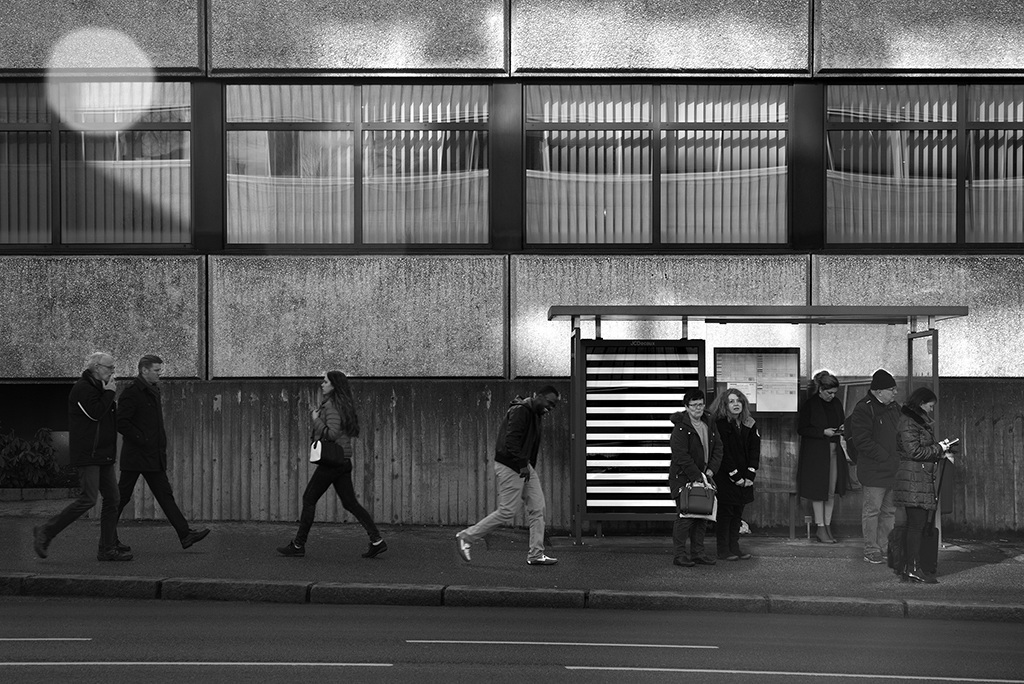Heather Jones: You don’t make sense. [Laughs] Maybe that’s not the best way to start an interview…
Jordan Seiler: It’s great!
HJ: In all seriousness, as humans, we love to label things. That’s how we make sense of the world, how we organize information. You’re an activist, you’re an artist, you are a social organizer, and you collaborate with a lot of different people. Your work is part street art, part public art, part social organizing… You don’t fit easily into any prescribed camp.
JS: Yes!
HJ: What was your approach to art and how did you arrive at where your practice is now? Was it through activism? Was it through fine art? Art school?
JS: Let’s go way back. I went to school for photography at the Rhode Island School of Design, after fleeing a bio program in Santa Cruz. I grew up in New York all my life. I was living in Providence for school, and I was working on some photographs and I made a large format C-print of one of them right before I went home after my first year. I was riding the subway in New York and happened to notice that the photograph I had made was a very similar dimension to one of the advertisements in the subways. And I thought to myself ‘ah that would be fun to put it up there.’ So I found my way to a large format inkjet printer, printed up two copies of the photograph, pasted one up…
HJ: And you just happened to know how to wheat paste? Or did you have this bent already?
JS: No I didn’t … I didn’t really paste. I just slopped some crap on the wall and stuck my poster to it. It was very informal. And I got excited about it. It opened my eyes to the city in a different way. Being from the city all my life, I would ride the subway and I would run around on my skateboard, but I never really saw the city walls as being my territory. I was unaware of graffiti. There wasn’t really street art at this point – this was in early 2000s – or at least not street art that I was noticing.
And so I went back to school and I told my teacher that I had done this action and that I was really excited about it and that I wanted to start a project to take over an entire subway station with my imagery. And she kind of laughed and said ‘this is not going to happen. And so if it doesn’t happen in the next month, let’s move on to another idea.’ I was not happy with how she treated my enthusiasm. So I bought a large format inkjet printer with some loans from the school and cranked out a whole bunch of prints and basically put that same photograph up over every single advertisement in a single subway station the next time I was back in the city.
And then I sat back and watched people interact with what I had done and tried to figure out what their reaction was. My own reaction was ‘this is a lot better than the way the space had been before.’
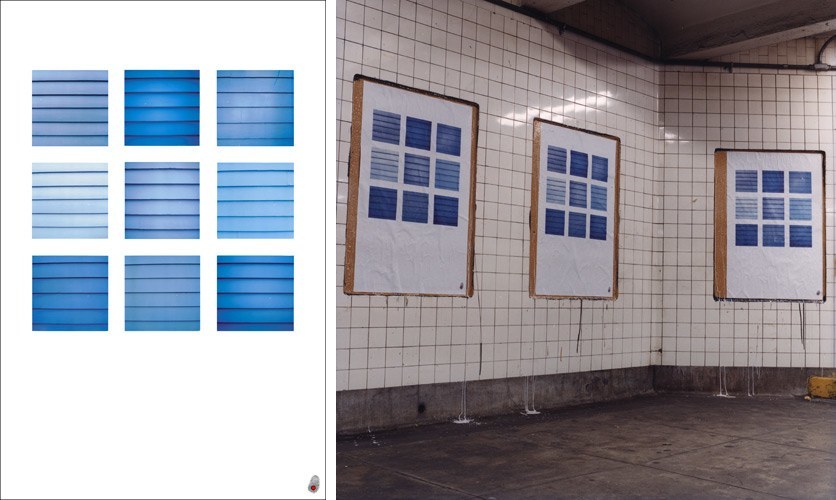
HJ: So at that point, was it about advertising? Was it about ego? What was that impulse for this project?
JS: I don’t think it was about ego. I was young, so maybe it was. But it was more about wanting to see my work in public. Wanting it to find a venue.
HJ: You mean a venue outside of the gallery system?
JS: I wasn’t really even aware of the gallery system at that point. Both of my parents were artists but when I was younger, I really made an attempt to not be an artist. This is why I tried to go to school for bio first, because both of them ended up not being artists. They had me and then they dropped their art careers to raise me, and New York’s expensive, and difficult. I thought art was a pretty foolish way to make a living. So it just… the first installation just excited me, you know? Obviously I knew what I was doing was illegal and that got my heart racing, but the fact that I wanted to put my imagery in public, and that advertising was allowed to exist there and my imagery wasn’t seemed inappropriate. Public space is my space as a public citizen. Why don’t I have access to that space and why is this commercial imagery privileged? And then once I got into taking over an entire station, I realized that there was an energy that the advertisements were creating, and that I was manipulating and changing that by calming the entire space down a little; not only with a single image but also the imagery itself didn’t ask anything of the viewer. And so it flipped the way the space felt on its head for me.
HJ: Do you think it had the same impact on other people too?
JS: From the reaction I got, yes and no. People generally do not consciously see advertising, and they definitely don’t expect there to be an intervention in that space. So whatever is there, generally, they’re going to try to figure out what it’s advertising. Even if it’s absolutely not pushing any kind of commercial product, they try and figure out what that product might be.
I got excited about the idea that I could intervene into this space that before I hadn’t considered to be pulling at my attention – it’s just advertising, it’s always there. This made me question the use of public space for that type of media. And that got me rolling on this project to try and investigate those ideas more. So I did nine more of those projects over the next year or so, installing images in an entire subway station. And after that I was basically hooked. The illegal aspect of it got me excited, but it also really upset me that I wasn’t allowed to have a voice and that potentially me asking for a voice or taking that opportunity would get me arrested. I thought that was pretty messed up. So that’s really where it began.
HJ: So you weren’t thinking “I’m going to be an activist”?
JS: No. Not in any way, shape, or form. No. I basically continued for the first five or six years on my own as a street artist putting up my own personal projects and trying to make the projects as big as they could be so that I could get people’s attention. With the subway system, it was taking over an entire station and trying to overwhelm that space. When I went on the street, it was about getting multiple advertisements on one avenue, one after the other, so that if someone were walking that path, they would start to notice a change. I was very aware at that point that one of my jobs was to get people to see the work, but there wasn’t a whole lot of activism built into it.
At one point I did a large project for the Scope Art Fair in Times Square where I took-over 90 advertisements within a 10-block radius of the art fair. I worked for months on it. I got all my friends to help me and we installed late one night, and within two or three hours it was all gone. The fair was threatened with a lawsuit, I was kicked out of the fair, and they didn’t have my back whatsoever. It was a total shit-show. After this happened, I dropped off the map for a minute and was thinking ‘I need to regroup and I need to figure out what I’m doing and why I’m doing it.’
HJ: When was this?
JS: I think it was 2006. So I dropped off the map for about two years. When I began to make work again it was right around the time Poster Boy was getting going and so I got really excited about his work. I met up with him and we started talking, and right around that time I was also starting to become aware of the illegal advertising issue in New York. I was beginning to look into the city databases where you can find out if advertisements have permits and I happened to become aware of this one company that was operating completely illegally in the city. And I thought, ‘this is my opportunity.’ This company is operating illegally, which makes me feel like I can call on a larger, diverse group of people to come and join me in a more civil disobedience protest project, right? This is not going to be about art, this is going to be about calling into question the existence of this illegal company, and them profiting off of my public space.
HJ: And why were these particular advertisements illegal?
SJ: Because this company failed to get the required permits. In New York you need a permit to put up an advertisement, and they had just forgone that entire process. So that began a project called New York Street Ad Takeover (NYSAT) which was basically a core group of 30 people who militarily went out one morning and white-washed 20,000 square feet of illegal advertisements. We had also planned for 100 artists to then go and occupy these spaces afterwards and put up art. It wasn’t necessarily about artwork going up, but since we had released these spaces from commercial influence, we thought now was the time to then bring back a public voice. And there were many artists. Obviously graffiti and street artists, because they’re kind of pre-primed to do this sort of thing. But there were also a lot of average public citizens.
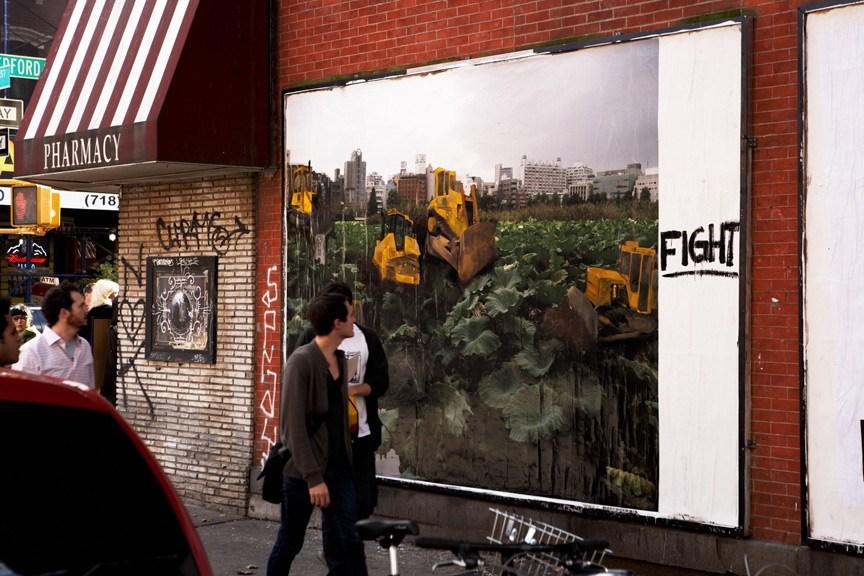
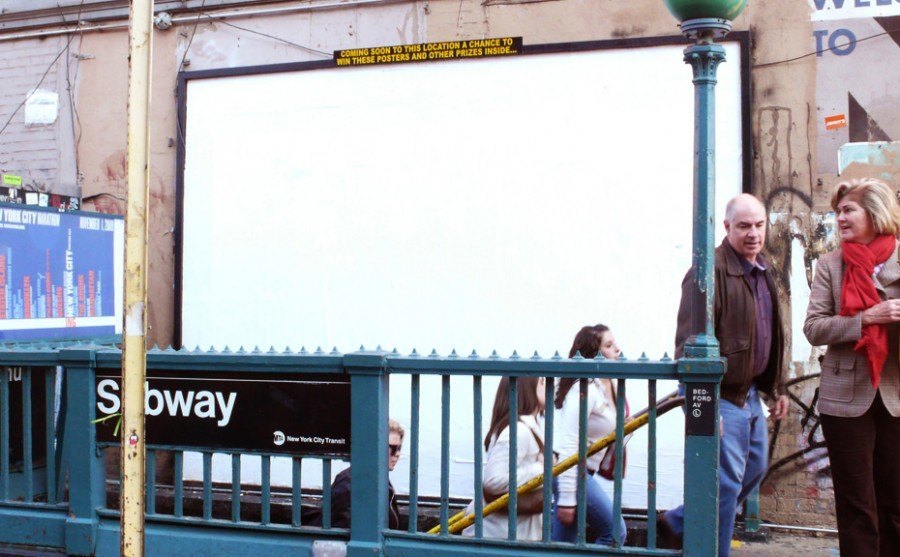
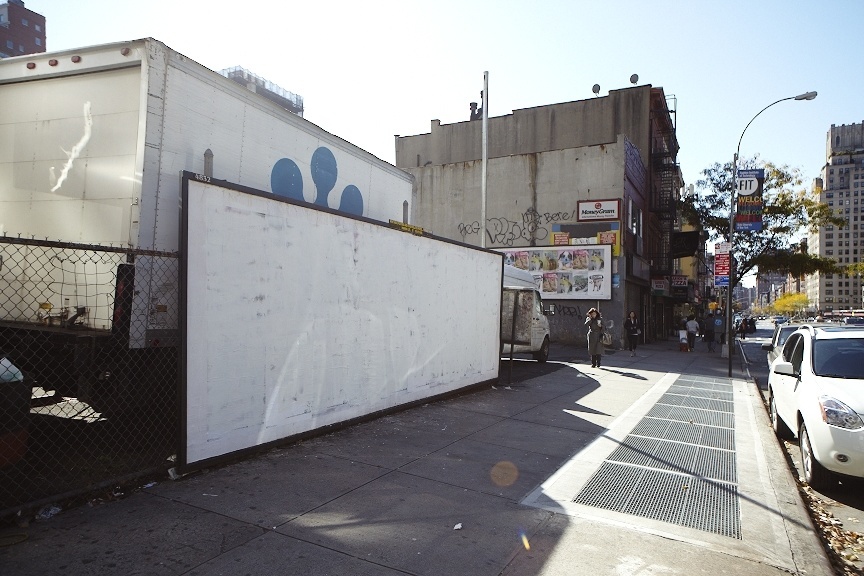
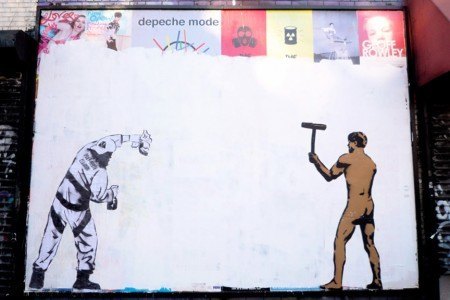
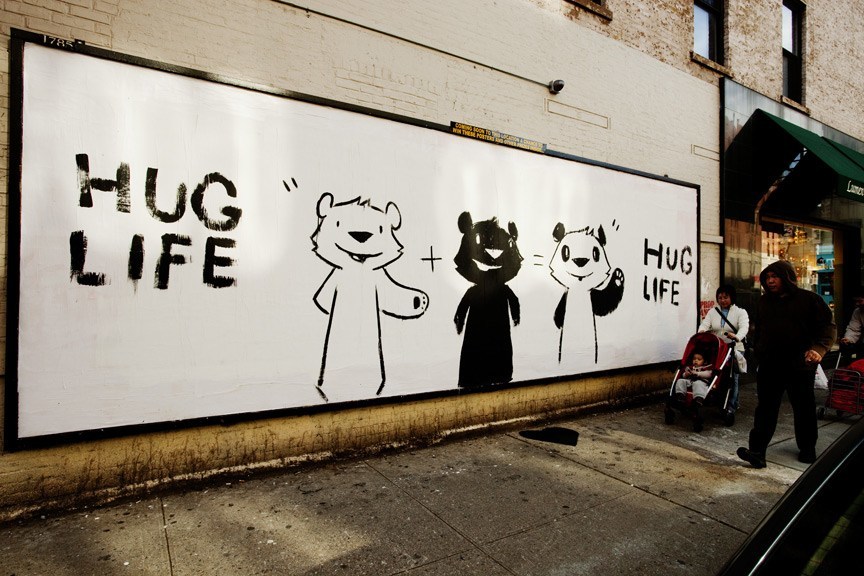
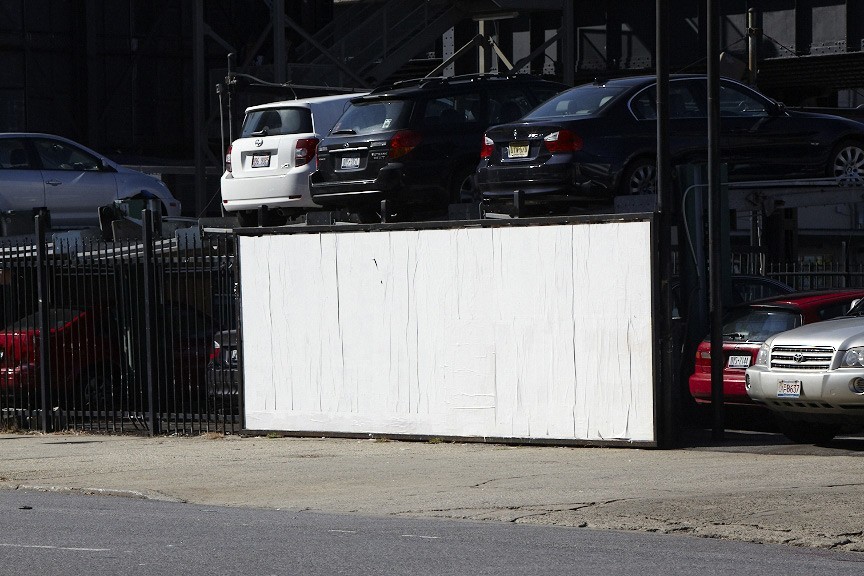
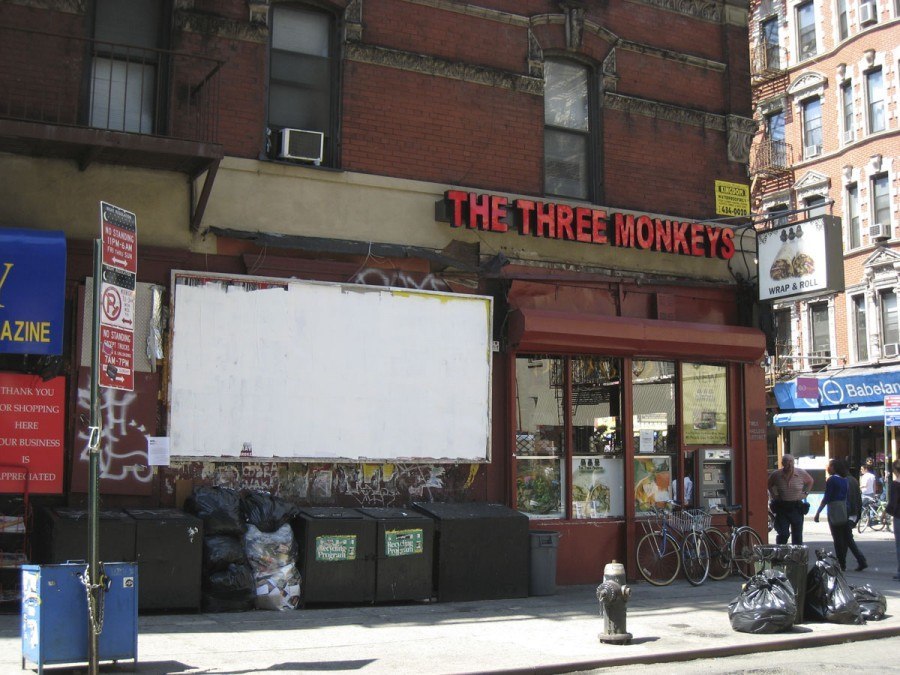
HJ: And when was this take-over? Around 2008/2009?
JS: This is around 2008. It was all of lower Manhattan and little bit of Williamsburg. There was a great set of billboards out there in Brooklyn that Momo, Maya Hayuk, a whole bunch of people got down on. They treated it like a big, fun game of art, all painting together and getting really into it.
HJ: Back-tracking a bit, earlier you made a leap from your photography practice to the term street art. Were you aware of street art and did you identify with that community early on? How did the transition from photography to street art happen?
JS: I was not aware of it – I missed the graffiti heyday. Either by age or by the people I was hanging out with. And I don’t really remember seeing graffiti in the city as a young person. I continued to do work at RISD pretty oblivious to the street art movement in general. I wrote some papers for art school trying to figure out what I was doing. And so very naively I was looking into people like She One, Kid Acne, names that came up in a few books I was able to get my hands on. But still it was very ignorant, and I wasn’t really all that interested in figuring it out. I’ve always enjoyed doing my own thing, and this felt like the right thing to do. I didn’t need a justification for it.
HJ: But you’re talking about Maya Hayuk and these other artists that helped with the take-over. At some point you found this community?
JS: Yes, for the NYSAT project I put out a covert email to my close community. The idea was: ‘please send this to anybody who would be potentially game. We need a lot of help, we need a lot of artists, so anybody who you trust and who you think would be interested, bring them on board.’ And that was probably one of the first community-building things for myself. Suddenly I became aware that there was this much larger community of people around me who were interacting with public space and willing to get involved in big collaborative projects. That’s when it became action.
Around this time there was a new lawyer at the Department of Building’s Sign Enforcement Unit in New York. And this project made a big stink in the New York Times and in the Daily News. Because these advertisements were illegal, everybody was like, ‘What the fuck? These public citizens are being tasked with doing the city’s job.’ So the lawyer went after the company, and it took about six years of legal negotiations, but the company ended up getting kicked out of the city and having millions of dollars worth of fines levied against them. How much of that was paid in the end, I don’t know. But I realized at that moment that we can do an action and it can have an actual result.
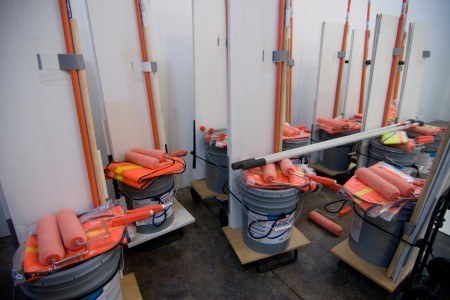
HJ: Was there any kickback against the artists?
JS: A lot of people were arrested – nine people.
HJ: They were arrested even though they were covering over something that was illegal?
JS: Yes, there was a lot of stink on the street. The company sent out their goons…
HJ: Goons? Seriously?
JS: Oh absolutely. There were fistfights on the street. It was crazy.
HJ: Did this all take place on one night?
JS: It was one quick day. It was very military. I spent three months mapping the city and the locations of these illegal ads. We had buffing units of two people that each had a 5-gallon bucket of white paint. They got vests and fake letters of authenticity. Cops would ask them what they were doing, they would show them the letter, and the cops would go away. It took a few hours for the ad company to realize what was going on before they sent out their goons and started calling the cops on artists as they were painting. And the cops don’t know their head from their ass when it comes to proper advertising; the illegal nature of this sign vs. that sign. So they would arrest people. In the end all of the cases were thrown out but those people spent two days in jail. That’s obviously no fun. But that’s what really initiated the activism.
And then that project ended up going on to several other iterations – we went to Madrid and Toronto. And in those cities we attacked legal advertising. One of my personal criticisms of NYSAT was that people thought the project was all about outing illegal advertising. Which it was in that project in New York because we were lucky enough to have that as something in our pockets. And that’s the way that I was able to convince a lot of people, regular citizens, to get involved. But ultimately NYSAT wasn’t about illegal advertising. It was about how our city is being used, what it’s being used for, and about questioning that in a direct way, not going through the proper channels.
HJ: But not so in Toronto and Madrid?
JS: No, the action in Toronto and Madrid were against legal advertisements. And that decision was made specifically to go against that notion that these projects weren’t about illegal advertising. It was to make sure that it was understood that this is about how we are treating our public spaces. What are we paying attention to? What ideas are we privileging? And is there a better possibility?
In Madrid, we didn’t ask for artwork at all. I contacted about 100 people and they were asked to send in text. That’s another issue: who wants to see your art vs. these ads? It wasn’t about saying we need more art on the street and less ads. We want to get rid of this commercial influence and what we replace it with is up to the public. In New York, we happened to have a whole bunch of artists who were willing to go out and paint something… it made sense. In Madrid, we tried to break that understanding from the average viewer that it was about artwork.
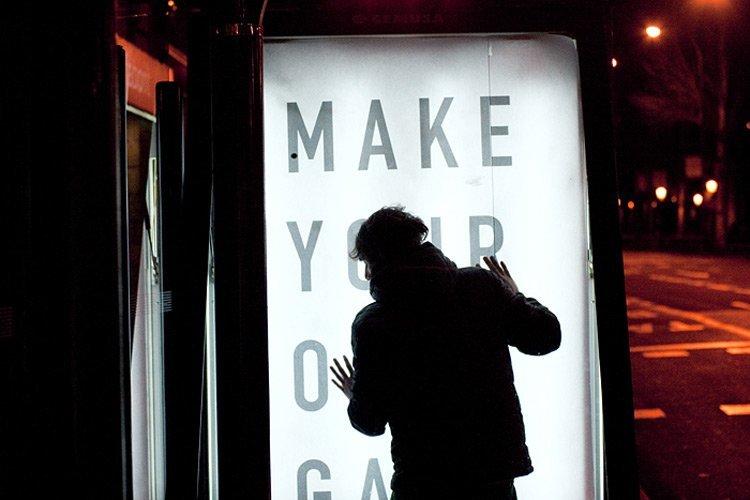
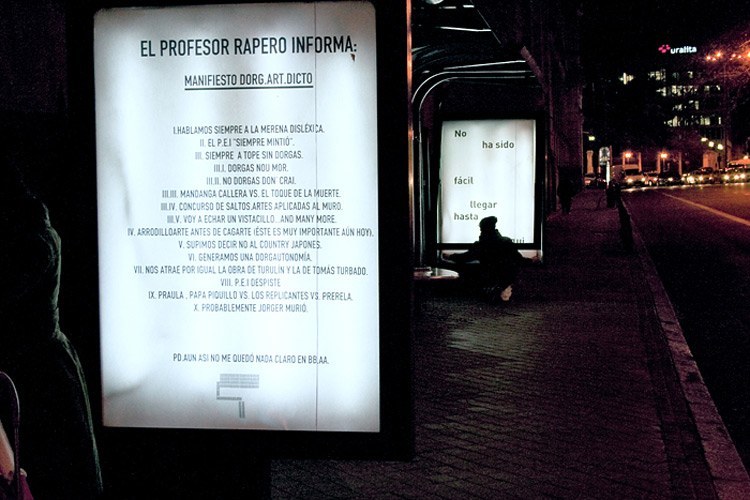
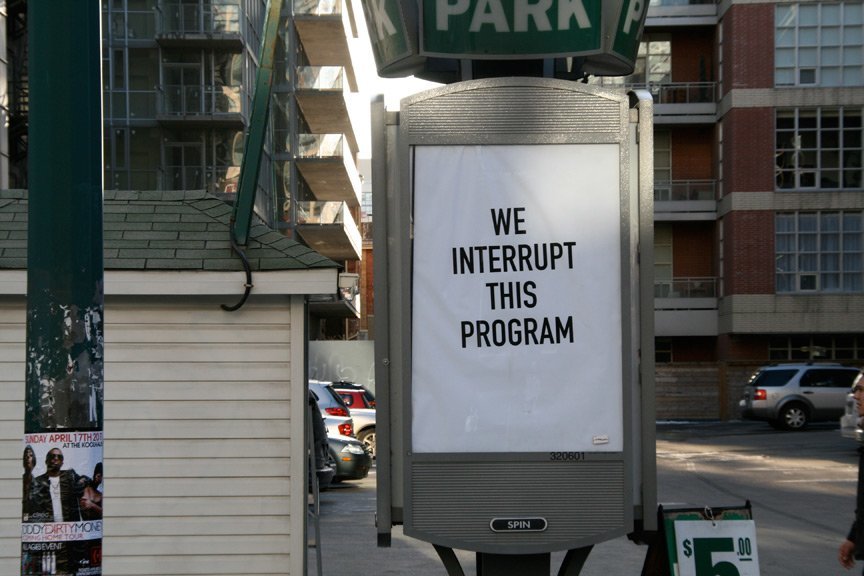
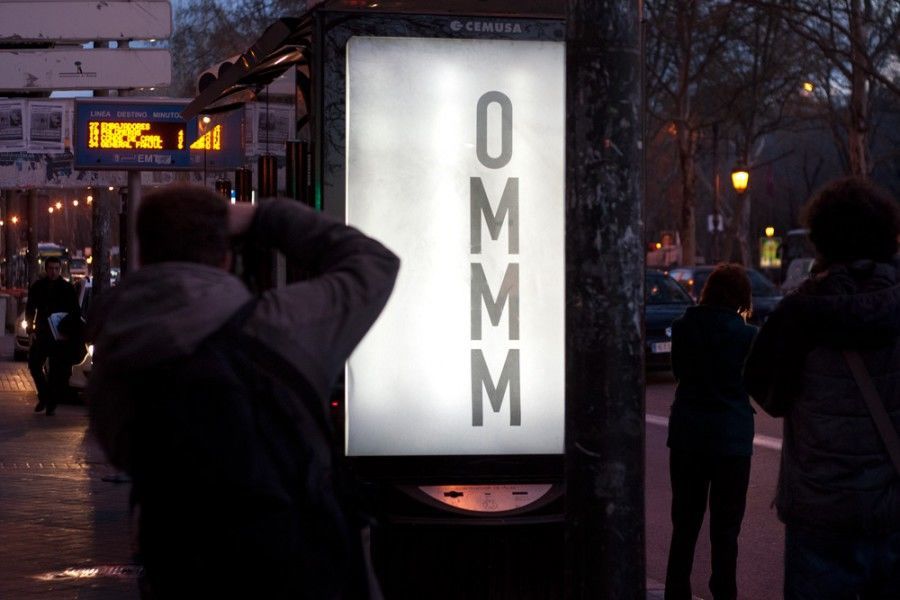
HJ: In Madrid and Toronto, did the project translate in the same way? Is that culture of advertising, and the attack on advertising, as relevant as it was in New York?
JS: It’s everywhere. Advertising is everywhere. It’s a part of the global capitalist system. Any major metropolitan area is overwhelmed with advertising. Stavanger is a city of 120,000 people and you’ve got plenty of it. It’s the right hand of production. It’s needed. You can’t sell shit without telling people what’s around and available.
HJ: These projects couldn’t happen alone; you collaborate with a lot of people. How do you conceptualize these collaborative efforts? Is this your art project and other people are helping you? Is this a community effort? How are these projects formulated?
JS: It is less community decision-making then one might want. I wanted to see these projects realized in a specific way. I didn’t consider that I should ask people their opinion about it. I said ‘we’re going to do this, would you like to be involved?’ In terms of who produced the project, I produced the project, but the action belonged to all of us. And to this day, I still speak to a lot of people who were involved and they feel an affinity and some sense of ownership over it.
HJ: How do you approach issues of illegality?
JS: I own the illegality of all of my projects. I use my name. I show my face. I think it’s very important to stand behind what I’m doing.
HJ: So no pseudonym for you?
JS: No, no pseudonyms, no blurry faces, no nothing. And that’s important to do because I want my criticism and my protest to be taken seriously. And if I hide behind a pseudonym, that’s an admission that I believe what I’m doing is criminal. And what I’m doing is not criminal. It is part of a long history of property disobedience in the service of protest.
HJ: It’s not criminal?
JS: Well, yes, technically it’s illegal. But there are a lot of things out there that are illegal that shouldn’t be. So by participating openly in this illegal action, I’m announcing to the world that I feel like I am within my right as a public citizen to do these things. If the cops want to come and knock on my door, they have my address, they have my phone number. They can come and we can discuss what I’m doing in a court of law. And eventually maybe my project will morph into a legal fight, and that would be what the art is. I’ve been lucky enough to not have that happen. And I think in large part that it is because I’m so open about what I do.
HJ: Right. There can’t be this ‘we caught him’ moment…
JS: You cant ‘we caught him’ because I’m already caught. It shows the level of dedication that I have to the idea and I think that is somewhat scary to somebody that wants to come down on me. I’m not just going to fold and take my plea and slink away into the night. I’m going to fight. I’m going to argue. I’ve thought about this for a very long time. I don’t just run around in the streets slapping my shit up for no reason. There’s a lot of intellectual pursuit behind what I’m doing. And I feel like I’m in the right; that the argument is in my favor if the argument were to happen. And outdoor advertising companies would just much rather not have that argument right? They are making billions of dollars off of this system, and its much easier to sweep it under the rug and pretend like I’m not doing what I’m doing, put the posters back up and continue making billions of dollars. It’s strange because yes, I can be completely out in the open with my projects, and I can act with a little bit of impunity knowing that the advertisers don’t want to create a David and Goliath situation. They don’t want to air issues that I want aired, like: Let’s all talk about this as a society and make a decision about whether or not we want to allow advertising to exist in this way.
HJ: Because there is a chance that people would say no?
JS: Well, you ask most citizens do you like advertising around you? It’s either ‘eh… It is what it is.’ Or ‘No!’ There are some people who appreciate it, and on some level even I appreciate it in that I don’t want a gray city, I don’t want a boring city. I think the visual cacophony that is created by being surrounded by images is interesting. But it’s just the wrong imagery to ingest constantly.
HJ: There are some that say this new wave of graffiti or street art isn’t as relevant as graffiti was in the 80s; that there’s not as much political or cultural dissent. Now that there are legal walls, does street art mean the same thing that it used to mean? In many ways your projects visually look less like the street art that many of us are used to, but in content are more closely associated with the graffiti movement of past decades. With these kinds of projects where you cover advertisements, are you operating from an expanded definition of street art?
JS: 100% The way in which our public spaces are arranged visually has an effect on our psyche, on our social behavior. And as artists who work in public spaces, we need to be aware that the imagery that we are creating is affecting how people live their lives.
HJ: There’s a moral obligation?
JS: Yes, it’s a moral obligation to make work that doesn’t just beautify but questions – it can beautify, but that should not be it’s first goal. Putting work in public space is a political act and I feel like you should embrace that. You can paint a pretty mural legally. And you are sculpting public space in some way, but it’s benign. Its sanctioned it’s accepted.

HJ: Does that necessarily make it bad?
JS: No absolutely not! I would much rather have a city covered in beautiful murals than advertising everywhere. But knowing the history of where you came from and the politics of what you’re doing should make you want to engage those politics more. Instead of slinking away from them and being happy just putting up pretty pictures.
As an analogy, let’s say you want to demand that a privatized public space be relinquished back to the community, and so you write a letter to your politician, or you go and you occupy that space. Those are two extremely different ways to deal with that problem. One is not necessarily better than the other, but one has more fight in it. From a group of individuals who at least in their infancy operated illegally – ran around the city writing their names on walls or pasting up their posters – coming from that and then transforming into someone who simply puts up murals is devolving.
HJ: So then, rather than devolving spiritually if you will, while looking the same, there’s a different option which is that the look of street art can evolve while the spirit of it, that of dissent, is maintained.
JS: Yeah, I think there are clearly still street artists who operate in both fields. Who do plenty of illegal and political work – even their mural making might have politics built into it. There are subgenres of street art, in particular this ad takeover sub genre that continues to have that hard-core political bent. And the rise of the mural festival has facilitated artists leaving that behind for obvious reasons. You want to see your work big, you want it to be accepted by people. And artists want to make big work. The reason you have shitty tags everywhere is because it’s illegal. If it weren’t illegal, you’d have masterpieces. Artists are inclined to take the time when they can, when offered the opportunity to do so.
I also have a problem with the term street art being applied to my work because it immediately brings to mind a lot of projects that I don’t find at all interesting. Good public art, unauthorized, unsanctioned public art has a thought or message that needs to be investigated in some way. The street is the place that that investigation starts. The street is the vehicle to pursue the idea. For me, I want people to think about their relationship to media in public space, how that alters the psychic environment. The street ends up being a very good place to start that conversation because its one of the only places where you don’t have a choice about what you’re ingesting. You’re a captive audience. That’s problematic. These streets should be the place where these conversations happen.
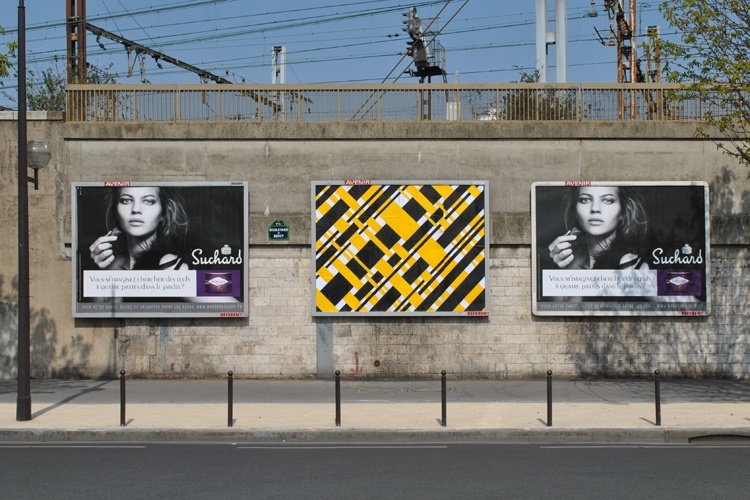
HJ: Here in Scandinavia there’s a very strong tradition of governmental investment in public art. But the result is often artwork that has been stripped of it’s meaning by committee. How then can we avoid this result if the decisions are made collectively as you’re suggesting?
JS: I’m not talking about sanctioned art. I’m talking about allowing the streets to be an open battleground.
HJ: You mean simply legalizing graffiti?
JS: Yes. Definitely. Legalizing graffiti. Legalizing mark-making in public. I think you’d be surprised at how many of the young bucks that are producing the crap work will fall off as soon as legalization happens, because it’s no longer fun; you can do it during the day and everyone can do it. And I think you’d see a very marked rise in the quality of the work being produced. Of course you’re not going to get rid of the monolithic public art that’s by committee. That’s almost not public art – it’s corporate art.
HJ: I want to get back to the idea that street art doesn’t have to be spray paint and paste-ups. That it can still be street art and look like something entirely unexpected. I’m thinking specifically about the inclusion of digital technology in your newer works – these kinds of augmented reality projects. Can you talk about that?
JS: So the leap to the digital stuff happened when a guy named BC Biermann wrote a paper on the illegal billboards and the corporate political machine that was allowing them to proliferate in Los Angeles. In his paper, he included the NYSAT project as an example of citizens taking on that system and trying to renegotiate the city on their own. So we began to talk and he was getting into this augmented reality idea, and I was really interested at that point in the thought that eventually I’m going to get too old to be running around in the street getting arrested. Also the idea was that obviously we’re all going to be living in some heads-up display pretty soon, so lets get on this bandwagon before it even gets out of the gate. So we did a very small project where we used five different artists to take over advertising digitally just to see if we could do it. And we got really excited when we figured it out.
HJ: So what was that? How did you figure it out?
JS: We found five different ads in New York that were repeated; that were prolific and ubiquitous. They were just prime candidates to hack into and interact with digitally. And we created an app so that when you pointed your phone at those advertisements they would be replaced with a digital artwork. As a way to preempt this expectation that we will be living in heads up space, this will be a way to actively negate advertising without having to touch the walls. Sort of an ad-blocker for real life. And there is a precedent for this. There was another project called the Artvertiser by Julien Oliver who created his own heads up display way before this was happening that did just that. But because AR was becoming readily available on mobile devices, this was something that we could create that everybody could use. Fast-forward several years, we get the NO AD project. The NO AD project was the first example that I’ve seen of AR being used that wasn’t kind of a one-trick pony, that didn’t have a single experience associated with it that you ingested and left behind. Let me explain.
So New York City has 468 advertising stations, I mean subway stations…
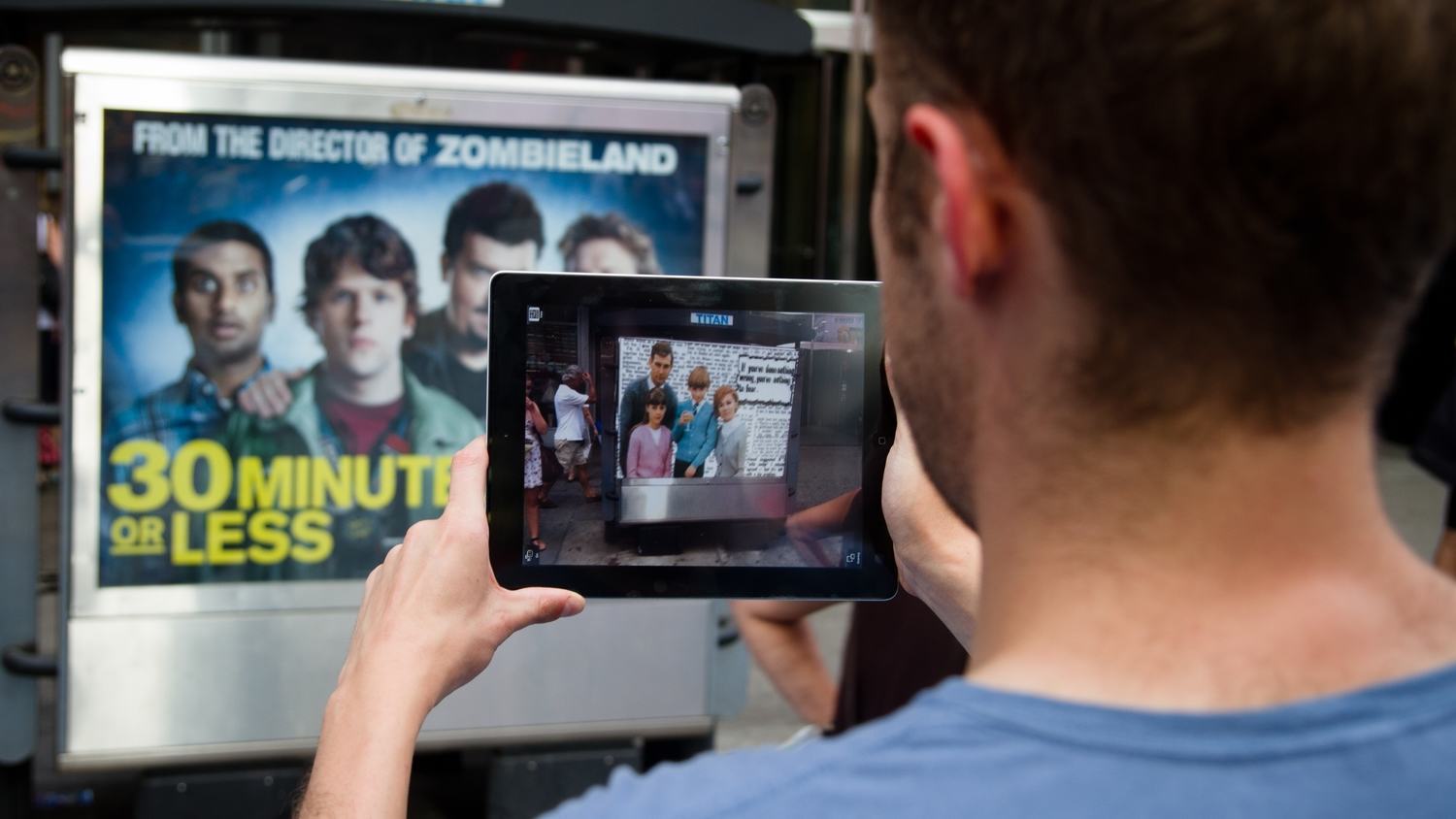
HJ: Freudian slip?
JS: Its kind of what they are! When I was doing the original projects in the early 2000s taking over an entire subway station, there was no such thing called Station Domination. And now it’s a ubiquitous way to advertise a product. In the larger stations in NYC but also in a train car – it’s now very rare to see different ads. Now it’s all ads for one product. I’m not taking credit for that, but this is how culture works. Ideas are put out there and get adapted and advertisers are really good at sucking up ideas so I wouldn’t be surprised if some ad exec saw it in the back of their mind.
HJ: Well it’s definitely more memorable.
JS: Exactly. Overwhelming your senses with one thought is what advertising is about in general. And so it only makes sense to then occupy an entire space with a single message. So ok back to NO AD, 468 subway stations. There are about 100 advertisements rotating in the entire subway system at any one time. And those advertisements repeat in every single station. And so it became a perfect opportunity to then take all of those ads, put them into our system, and basically create a digital gallery space out of the entire subway ad infrastructure.
HJ: So practically speaking, how does this work?
JS: The way it works is that you take a photograph of an advertisement, and you turn that into a QR code. That QR code then allows me to tell the application to do something when it sees that QR code. What we did mainly with the app is present a simple two-dimensional image on top of the advertisement, but the content could be a moving image, it could be sound, it could be 3D, whatever potential the digital space has, this can do. The idea is that you’re recognizing something in the physical world and you’re allowing that to trigger the application on your mobile device to do something.
And so because the ads are repeated along the subway platform it became the perfect opportunity to present people with multiple artworks all within the same space. The idling that you do in the subway, that down time, was really important because its very difficult to get someone to pull a phone out of a pocket, launch the app, point it at a single image just for that one interaction, right? So if you have a subway platform with multiple advertisements, users get multiple content at once.
HJ: Where did the artwork come from? What is the content?
JS: So the artwork for NOAD came initially from the street art community, much like NYSAT did. It was an open call to artists. We curated it, and then about every month and a half there were new shows. The idea was to create a commuter app that would again preempt the use of heads-up displays. And a future when you would walk through a subway station and you’d be able to eliminate all of the advertisement as you walk down the platform. But NO AD as a proof of concept for that idea. The fact that It functioned as digital gallery space that took advantage of the advertising infrastructure I thought it was interesting, and that you could take this aggressive content and use it for your own devices. And that idea of creating a digital gallery required us to constantly update the content like you would in a physical gallery. We had some guest curators; RJ Rushmore curated one, and we worked with the International Center of Photography that presented Sebastian Salgado’s work, which was fantastic. And we ran the NO AD app for a year, and as a single project, it had its life.
HJ: Do you think about the issue of people constantly being on their phones, being on a device? There’s a lot of talk about how we should put these devices away. As you’re making something specifically to be looked at through a screen, how do you conceptualize that?
JS: Personally, I agree. One of the biggest tragedies of having a phone is that I never stare at a blank wall anymore, I never get bored. And that’s important for an artist, for everyone. And we’ve lost that. That said, I don’t think this technology is going away, but I also don’t think that it is going to sit in our hands for much longer. I think we’re all going to look back and think that it was insane that we held these things in our hands for that long. Technology is going to be heads-up and integrated seamlessly, and our computing will happen hands-free very soon. That doesn’t necessarily mean that we will be less washed over by the flood of information, but this is not going to stop, so we have to figure out how to deal with that.
For NO AD, the project was built with the expectation that people were already holding their device in their hand, and I was giving them something better to do with that device while they were idling on the subway platform rather than thumbing through Facebook. It was also built as a proof of concept so that when technology does go heads-up, this will be something that is actively happening in the background. So I imagine being able to download an app that Runs in the background of your heads up display, so that when you walk down the street or into the subway, it will just obliterate advertisements and replace them with artwork and you don’t have to actively do anything at all.
HJ: I want to backtrack a little bit if that’s ok. I remember a key project – Public Access. What was that about?
JS: So that’s actually funny because that happened in Nuart. Martyn asked me to come to Nuart in 2012 and I wanted to do a large-scale ad-takeover in Stavanger. I walked through the city on Google maps; saw that there were a relatively limited number of advertisements in the downtown area and that potentially I could take over every single one. Not having been to the city, I needed to figure out how to get access to these locations. I went back and forth with Martyn and other people that did research for me, and I figured out that it was a key that a friend of mine had. I got here, and then suddenly realized , there were very few advertisements that used that key, and most of them used another key. I freaked out. I was teaching at a school here in Stavanger and they had a little metal shop and so I quickly jimmy-rigged a new key, just built one. And after doing that, I was like, ‘that was not as hard as I thought it would be. OK, let me start making these things.’
Once I had made a few keys, it only made sense that I would start to give those keys out to other people. Because again, the NYSAT project was really about trying to create a community of people who by participating in it, were complicit, and to grow the community of people who would participate in something like this. The goal is to affect a much larger audience than I can on my own. When you get more people involved, you expand the reach. The PublicAccess project worked in the same way. That project has gone on to spawn a website where you can go to a map – there are about 40 cities right now that have access – click on the city, pay pal me a few bucks for shipping and material costs, and ill ship you a key. I ask that people take photos and hashtag if they put their photos on instagram, because there is an art project for myself involved. And so each action becomes part of this much larger document.
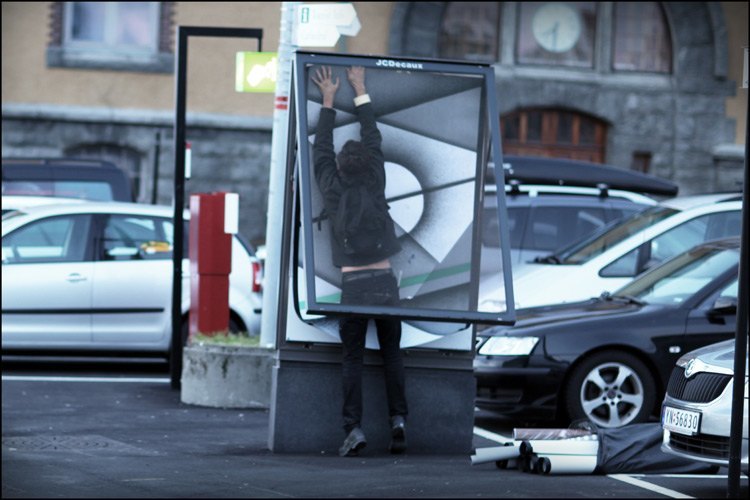
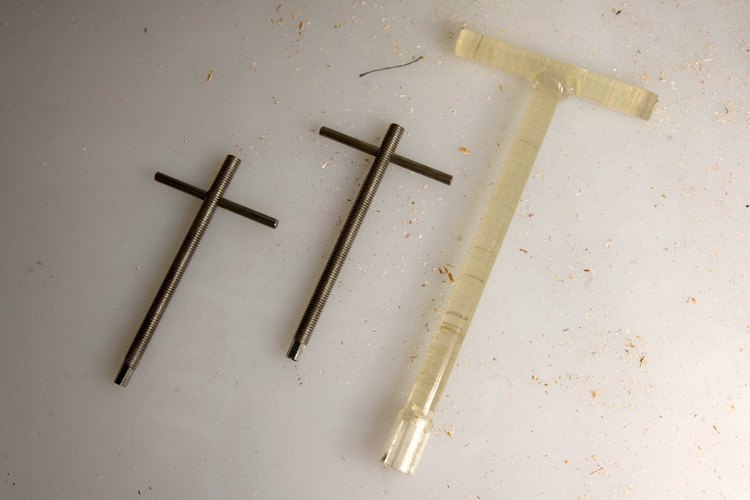
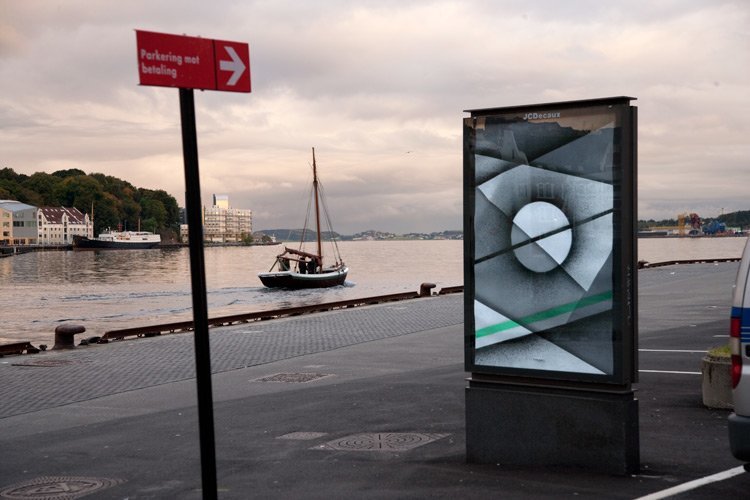
HJ: You’re essentially taking a project off its leash when you bring in so many people. Are there ever things that happen that you don’t agree with, or results that you’ve unintentionally enabled?
JS: Yeah. People buy the keys and then put up their own advertisements with them.
HJ: Really? That’s surprising.
JS: Yeah definitely. Artists sometimes use them and they’ll put their website on the work which I don’t agree with, or their logo on it. One of the criticisms, and its an easy criticism to make, is that if you put a logo or website well, you’re just using the space to self-promote. Isn’t that advertising? I think if you had an infrastructure of spaces in which artists could put their own work and self promote, fine. Provided that was equally available to everybody else in the city. That’s totally cool with me.
Again, it relates to the level of adherence to the core idea. I don’t want the action to be about self-promotion. I want it to be about questioning the use of that space in general and not just for artwork. And when you start making it about yourself, when you start putting a logo or start developing a stylistic similarity in your work through which you will become recognizable, the core argument is lost because it becomes about you and it doesn’t become about questioning public pace. It’s vey easy for somebody to see and ad-takeover work and say oh that’s a Shepard Fairey. They don’t see an ad takeover. They don’t see questioning of the space. I’m not interested in culture jamming. I’m not interested in ad criticism. We’re all well aware of the media theory that knows this shit is bad for you. My core interest is having people start to make a decision about how public space is curated. And in order to do that you need to be questioning the use of the space. And in order to do that, it can’t be about you.
In art school I began to understand that stylistic similarities were also a logo, and that I needed to stay away from that as well, which has caused me some difficulty in that I haven’t been able to develop a brand.
HJ: Because you have to have a brand to sell yourself?
JS: Yeah! People like to see the same shit over and over again. But that fails the project. The personal ad-takeover project that I’m working on right now is one of the more successful aesthetically and I’m going to have to abandon it relatively soon.
HJ: Can you talk specifically about the project that you’re doing here in Stavanger?
JS: I’m doing a few pieces for the Collisions series. So you asked earlier about content. One of the things that I noticed really early on is that if you include anything figurative, people will latch onto that and think they are looking at an advertisement. Texts are really difficult also. I find the most effective imagery is very, very simple design work.
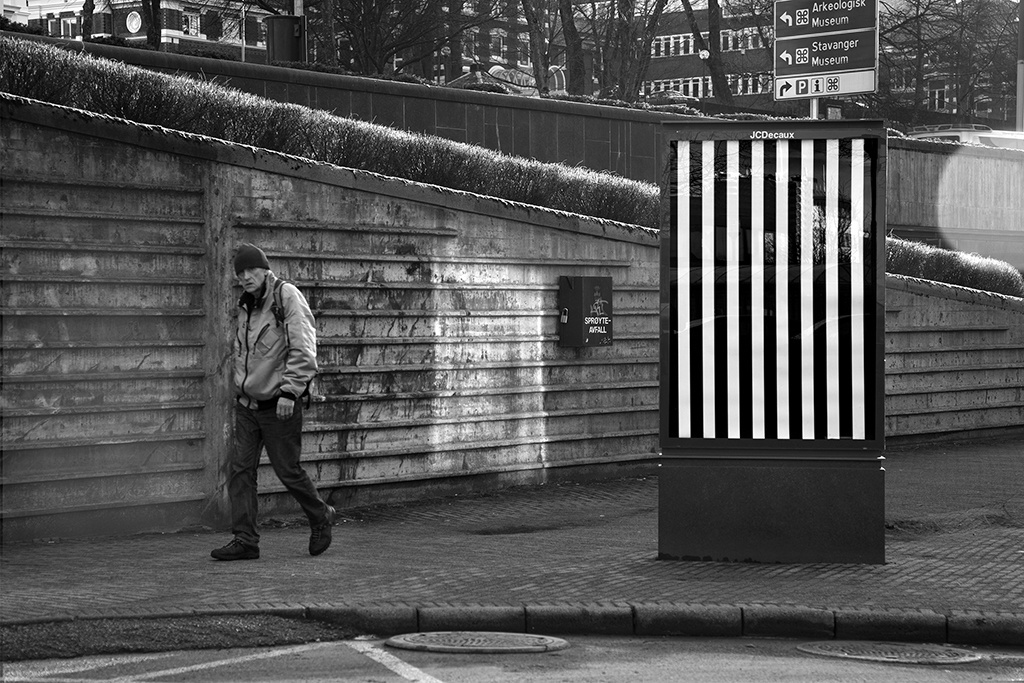
HJ: Design work like patterns?
JS: Yes, like patterns. That’s what I’m doing now and I think it’s some of the most successful work I’ve done. There’s nothing to latch on to. There’s no criticism inherent in the work. I’m not leading viewers anywhere. And if they do notice my work hopefully the simplicity of the design is so different from advertising that it allows them to notice it but without a reference behind it that leads their mind somewhere specific. They come to an impasse and their own brain has to take over at that point. ‘Why the hell would this person do what they did? Do I like what was there better?’ That sort of mental process that they then go through is really what I’m trying to do with my projects in general. I’m not telling people that they have to get rid of advertising in public space. I am trying to create a conversation that allows people to have the question enter their mind. Because it’s not something they think about right? It’s assumed that that is the way public space is used, for advertising period. And that’s just simply not the case. If any sort of real change is going to happen, it’s going to be by developing a citizenry with a consensus to remove it.
HJ: So this project here in Stavanger is simply that? You’re covering over advertisements and the Aftenbladet billboard here with these very basic patterns?
JS: Well the billboard here in Stavanger is actually a photograph of one of my installations. The installations that I’m doing around town are the most simple design possible; black and white graphics. I’ve done similar things in the past where there was very little content. I went through a phase where I was taking old used books taking all the pages and pasting them together into one poster. That was relatively effective.
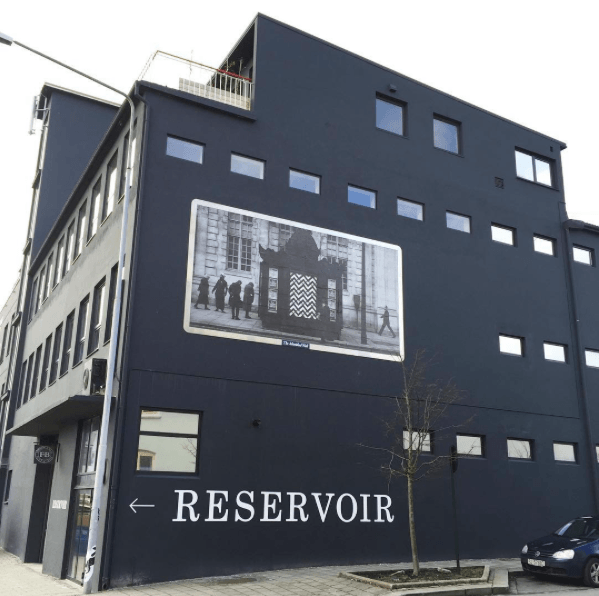
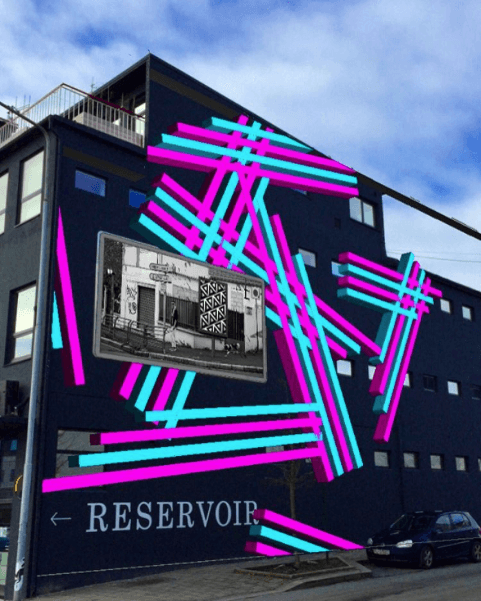
HJ: But now you think that this patterned work is becoming too recognizable?
JS: Well yes. I can’t do it for much longer. I mean I can… I have my fingers in a lot of other things, and so my time to develop street projects is limited. I’m going to allow myself to continue with this project for probably a longer amount of time than I would have a long time ago when I was really just doing street work. But eventually it will have to go.
HJ: Speaking of branding and advertising oneself as an artist, do you show your work in galleries? Do you think that for artists whose practice generally takes place in the streets that it is a compromise to go into the white cube gallery space?
JS: I have done gallery shows when they were offered to me, but I never really pursued it until now. I have no problem going into the white cube. It’s another space in which to work and I can figure out what work that makes sense in that space. I do have an issue which I probably could resolve but haven’t yet, which is having to sell your shit to really rich dudes to make a living. The print sale model, like what Faile did early on is a lot more egalitarian. I think my work requires a little explanation and critical thought though and sometimes it helps to have the work in an environment where that is expected. And the work that I do that enters a gallery is made specifically for the gallery, with that audience in mind.
HJ: But at this point, you’re mainly concerned with your public practice?
JS: Yeah, what I find interesting is the difference between having an idea that needs public space in which to find it’s fulfillment, and using public space to present artwork. They are two very different things. There’s a project in New York called 596 acres that is absolutely not an art project, but that I consider to be one of my favorite current public art projects happening. The woman who started the project is a lawyer, an advocate for underserved communities. She realized that there were public lots in NYC that were sitting vacant and wasting away. She was also confronted with the fact that a lot of developers were shutting down existing community gardens as they used imminent domain or other nefarious ways in which to usurp control from those communities. So what she wanted to do was figure out ways to engage communities that surrounded these vacant lots and have them take those spaces back for themselves.
HJ: And do it legally?
JS: Yes legally. But she didn’t have any way to reach out to those communities other than by putting a sign on the street. So she would lock a sign to a fence that says, “This land is your land. If you want to help turn this into a community garden, call us.” Then you can call her and she’ll sit with you and fight with you for the two years that it takes to have that space turned over to the community. She’s a private individual and this is her passion project. She has commuted something like 30 or 40 community gardens. She’s got hundreds of lots that are in process… and there are these signs that go up as public posters – they might as well be a wheat paste. It’s illegal for her to strap them to the fencing, but she had a problem and the these signs on the street were visual and physical component that was required in which to engage that idea.
HJ: And that’s different than the other which would be, I have an artwork and nowhere to put it, I’ll put it in the street?
JS: Yeah, or I want people to see it and I have something to say and I want to get that message out to the world. The goal was so much greater than just putting work up on the street, right? The poster was merely the facilitator. I think that’s really interesting. Personally with my project, I’ve got a discussion I want brought to the surface and using public space – it happens to be a public space issue – but using public space is the vehicle to start that discussion. And I think work that uses public space in that way is much more interesting. When you go back to the origins of urban graffiti, I don’t think there was a consciousness surrounding what those people were doing but they were reacting against a lack of agency, a lack of voice and a lack of identity. And so the scrawl on the wall became a way of asserting their identity on a culture that didn’t recognize them. And so that was the issue for them.
HJ: So then how does this relate to Stavanger? How does all of this come together here?
JS: Well I didn’t know much about Stavanger before Nuart happened. I was here for the first time in 2012. I’m assuming that Scandinavia is pretty clean, public space is used in a certain sort of way… There wasn’t a lot of tagging, and Martyn could probably speak to this more, but knowing his background in disrupting expectations, it only makes sense that as the street art movement is growing and you have an interest in disrupting peoples expectations of how a system works, you then bring in street artists and take a town and turn it on its head somewhat and say, ‘ok, this is how you understand your city? Well now lets think about it this way.’ And that’s interesting in and of its self.
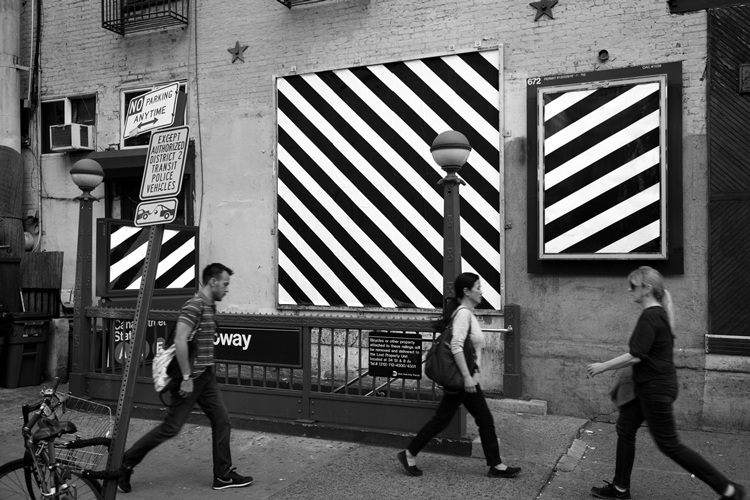
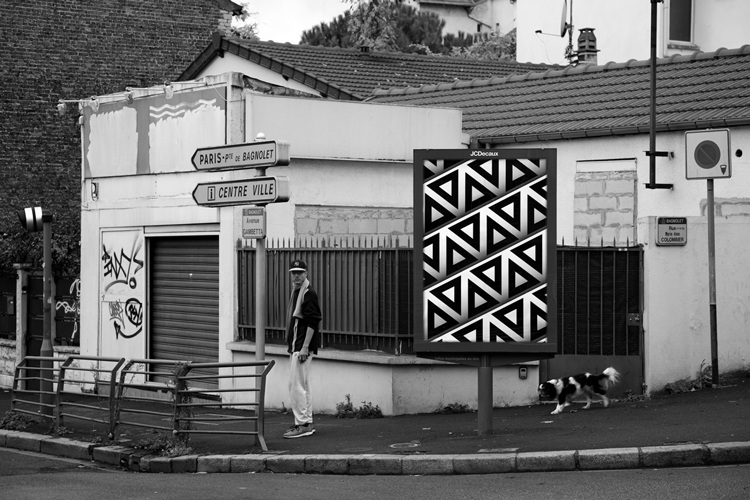
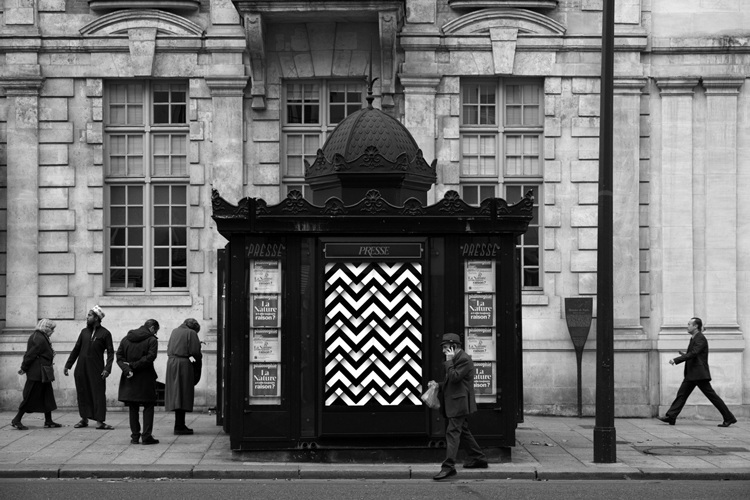
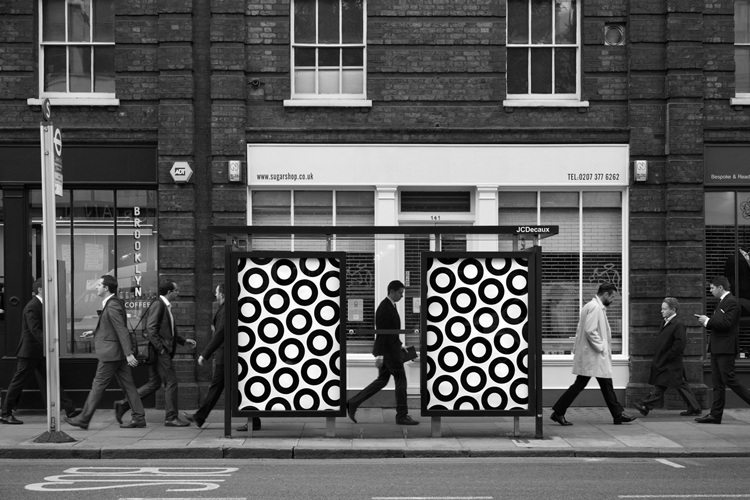
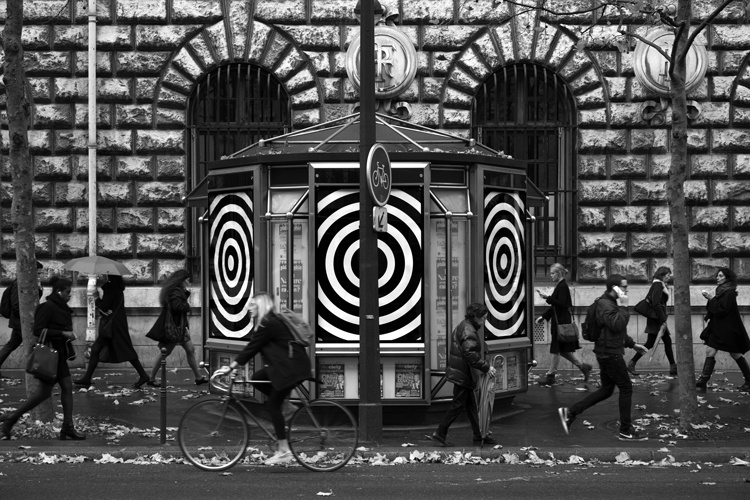
HJ: Do you think that you will ever do work that is not about advertising? That you’ll move on to a different topic or social issue?
JS: No. No. There are an infinite number of possibilities for how to investigate this idea. Saying that I’m never going to stop talking about advertising doesn’t seem limiting to me in any way. And I’m definitely not going to succeed. I think advertising will outpace me.
HJ: Throughout our conversation here, we have been operating on the assumption that advertising is bad for people. Can you outline that? Is advertising bad for people?
JS: There’s very little academic research into the affects of advertising. There is plenty of research done by the industry itself though, which is obviously biased. The little third-party, unbiased research that has been done is pretty damning. There are correlations that can be drawn between the amount of advertising that you ingest on a daily basis and some of the behavioral qualities that you embody.
HJ: Apart from your buying habits?
JS: Absolutely! There are intrinsic and extrinsic qualities that we all have. Intrinsic qualities are your tendencies to pay attention to yourself. Extrinsic qualities are focused externally. People who ingest larger amounts of advertising tend to embody more intrinsic qualities. So they exhibit lower degrees of empathy and higher degrees spending and of financial debt. And this is actually a socio-economic issue, right? The rich can buy as much as they want and never get poor. But for the people with lower incomes, it’s a bigger burden because they more easily fall into cycles of debt that are far more detrimental to their overall existence. Simply getting rid of advertisements could help lower poverty.
And there are definitely correlations between low-income neighborhoods and, for example, the amount of alcohol advertisements in that area.
HJ: You mean not just the rate of purchasing, but the number of advertisements in these areas. You think that ad agencies actually target specific demographics?
JS: Absolutely. It’s a known fact. And the nature of advertising is to repeat the message enough times until you do it. If you surround people with enough advertisements for liquor and cigarettes, you’ll end up with a lot of people who smoke and drink. That’s how it works. It’s a well-known industry tactic.
HJ: We’ve been discussing advertisements for alcohol and cigarettes, things that are accepted as potentially detrimental. But does this hold true for ads for clothing, ads for telephones, etc.?
JS: Great question – Yes. The need to consume is a problem in and of itself. It doesn’t matter what we’re consuming. It’s that constant desire to find fulfillment in consumption. Then there’s also the idea, and Anne Cronin speak a lot about this, that advertising maps the city and our rhythms through the city, and that by targeting the way in which we navigate our public spaces, advertisers are linking cycles of production and consumption to our biology, to the rhythm of our lives. The processes of living your life are all inextricably linked to advertising. That legitimizes the system of conspicuous consumption so much so that it is something we no longer have the ability to question.
HJ: As you describe it, this issue is pervasive and overwhelming. What would you tell an individual citizen, of any city, about how they could make a difference? As an individual person, what can you do?
JS: As a starter, make sure to have a five-minute conversation with someone you don’t know in a public space – or something that requires you to engage with the world around you in unexpected ways. The idea that I’m invested in is only one of millions that are a part of creating a better society. So to focus people’s attention only on what I’m doing seems limiting. I want people to engage and critically think about the world that they’re living in in whatever way makes the most sense to them.


